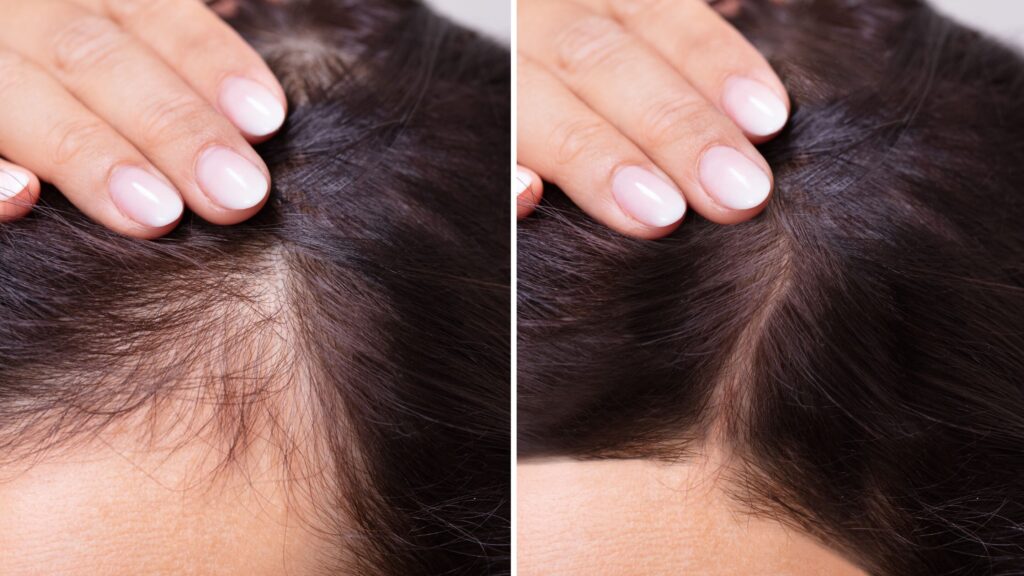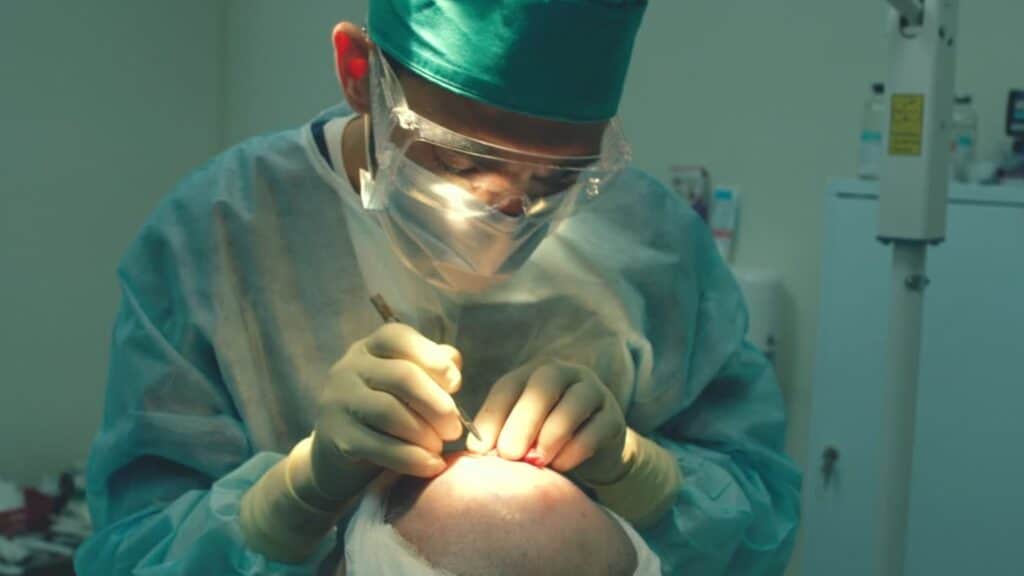Hair loss affects millions of people, and if you’re reading this, chances are you’re one of them. Whether you’re dealing with thinning hair, a receding hairline, or full-blown male pattern baldness, you’re not alone—and you’re definitely not out of options. In fact, with today’s modern hair restoration procedures, getting a fuller head of natural-looking hair is more achievable than ever.
In this guide, we’ll walk you through everything you need to know about hair restoration in the USA, so you can make an informed, confident decision. No guesswork. No confusion. Just clear answers and trusted advice.
Understanding Hair Loss

Hair loss is a common condition that affects millions of people worldwide. It can be caused by a combination of genetic, hormonal, and environmental factors. Understanding the underlying causes of hair loss is crucial in determining the best course of treatment. Whether you’re experiencing thinning hair, a receding hairline, or more extensive hair loss, knowing the root cause can help you choose the most effective solution.
What Causes Hair Loss?
Hair loss can be caused by a variety of factors, including genetics, hormonal imbalances, stress, and certain medical conditions. Male pattern baldness, also known as androgenetic alopecia, is the most common cause of hair loss in men.
It is caused by the conversion of testosterone to dihydrotestosterone (DHT), which leads to hair follicle shrinkage and eventual hair loss. Female pattern hair loss, on the other hand, is often caused by hormonal imbalances and can be triggered by menopause, pregnancy, or childbirth. Understanding these causes can help you and your specialist develop a targeted treatment plan.
What Is Hair Restoration, Really?
Hair restoration is an umbrella term for treatments that help bring back your natural hair. This can include non-surgical solutions, stem cell therapy, and hair transplant surgery. The goal? Regrow or restore a healthy head of hair using your own hair follicles, either by stimulating growth or redistributing them to thinning areas. Starting a hair restoration treatment often begins with a video consultation, making it convenient to fit into your schedule and minimize commuting time.
Why People Choose Hair Transplant Surgery

For many people, hair transplantation is the most effective and long-lasting solution. It involves taking hair from a donor area (typically the back or sides of your scalp) and transplanting it to areas where your hair is thinning or balding. The result? Natural-looking results that blend perfectly with your existing hair.
When considering a hair transplant, several factors come into play, including the patient’s hair type, the chosen technique, and individual healing responses, all of which can significantly affect the success of the transplant.
Let’s break down the two most common types of hair transplant procedures:
1. Follicular Unit Extraction (FUE)
Individual hair follicles are extracted and transplanted one by one. Transplanted hairs are permanent and can be treated like natural hair after surgery.
Minimally invasive with no linear scar.
Shorter recovery time and less discomfort.
2. Follicular Unit Transplantation (FUT)
A strip of scalp is removed from the donor site, and individual hair grafts are dissected and implanted.
Great for those needing a higher volume of transplanted hair.
May leave a thin scar, but easily covered by surrounding hair. Individuals who wear their hair long may find the scars from follicular unit strip surgery (FUSS/FUT) to be less noticeable compared to those who keep their hair short.
Both are excellent depending on your goals—and yes, many patients see amazing results with either, but your best results without scarring will always be FUE.
Consultation and Planning

A consultation with a qualified hair restoration specialist is the first step in determining the best course of treatment for hair loss. During the consultation, the specialist will assess your scalp and hair loss pattern to determine the underlying cause of hair loss. They will also discuss your hair restoration goals and create a personalized treatment plan tailored to your needs. This initial meeting is crucial for setting realistic expectations and ensuring you are comfortable with the proposed approach.
What Makes the Best Hair Transplant in the USA?
Finding the best hair transplant clinic isn’t just about location—it’s about expertise, credentials, and patient experience. The best hair transplant doctors are often board-certified and have a history of delivering phenomenal jobs with consistent outcomes. Choosing a highly skilled hair transplant doctor with advanced training can significantly enhance the effectiveness of hair transplant procedures for restoring natural hair.
You’ll want to look for:
Board-certified or double board-certified surgeons
Clinics offering advanced techniques
Transparent pricing and consultation
Real before-and-after photos
Ongoing post-procedure care
A top-tier clinic will guide you through the entire process, from your consultation to follow-ups after the procedure.
Understanding Hair Transplant Cost
We get it—hair transplant cost is a huge factor.
The price can vary based on:
How many hair grafts you need
The number of hairs involved in the procedure
The surgeon’s expertise
Your location (L.A., New York, etc.)
Whether you’ll need more than one procedure
While the cost may seem like a lot upfront, it’s often more cost-effective than constantly paying for temporary solutions. It’s also worth comparing prices here in the U.S. to medical tourism destinations, but remember: cheaper isn’t always better. The entire experience, including safety, surgeon skill, and natural results, should come first.
What to Expect During the Procedure
When it’s go time, here’s what typically happens:
Your head is elevated and prepped.
Local anesthesia is applied (you stay awake).
The surgeon harvests grafts from the donor area.
Tiny incisions are made in your thinning zones.
Grafts are carefully placed for natural-looking results.
You’re done! Recovery starts, and you’ll get your aftercare instructions.
It’s usually an outpatient procedure, meaning you’ll go home the same day.
Recovery and Post-Procedure Care
After your hair restoration surgery, you’ll likely feel some tightness or mild discomfort for a few days. Follow your surgeon’s instructions closely:
Avoid strenuous activity.
Keep your head elevated.
Expect some shock loss (normal hair shedding)—don’t panic!
Your transplanted hair will fall out before growing back stronger.
Full results typically show up around 9–12 months post-procedure.
The Importance of Hair Follicle Health
Hair follicle health is crucial in achieving successful hair restoration results. Healthy hair follicles are essential for producing strong, healthy hair. Factors that can affect hair follicle health include genetics, hormonal imbalances, and certain medical conditions.
A qualified hair restoration specialist can assess your hair follicle health and recommend the best course of treatment. By focusing on the health of your hair follicles, you can improve the chances of achieving natural-looking, long-lasting results.
Non-Surgical Hair Loss Treatment Options
If you’re not ready for hair transplant surgery, or want to enhance your results, consider:
Stem Cell Therapy
Medications like minoxidil or finasteride
These can boost hair growth, preserve healthy hair follicles, and improve the appearance of thinning hair.
Choosing the Right Hair Restoration Surgeons
There are a lot of hair restoration specialists out there. So how do you choose the right one?
Ask these questions:
Are they board-certified or affiliated with the American Board of Hair Restoration or the International Society of Hair Restoration?
Do they offer both FUE and FUT?
What’s their experience with your type of hair loss?
Can they show you real patient results?
How do they handle complications or the need for more than one procedure?
When you’re trusting someone with your receding hairline or androgenetic alopecia, you want to be sure they’re doing a phenomenal job. Consider choosing a board-certified plastic surgeon who specializes in hair restoration for the best results.
Qualifications and Credentials
When selecting a hair restoration specialist, it is essential to look for qualifications and credentials that demonstrate their expertise and experience in the field. Look for specialists who are board-certified. These credentials ensure that the specialist is well-trained and adheres to the highest standards of practice, giving you confidence in their ability to deliver excellent results.
The Best Hair Transplant in the USA Is Closer Than You Think
At Best Hair Transplant in Redondo Beach, Los Angeles, we’ve helped thousands of men and women get their confidence back. Our double board-certified facial plastic and reconstructive surgery experts offer both FUE and FUT, using leading-edge techniques designed to meet your unique hair restoration goals.
We keep the whole process smooth—from first consult to final result. And we’re transparent about everything: hair transplant cost, what to expect, and how to get the best results possible.
Let’s Start Your Hair Restoration Journey
Your confidence doesn’t have to take a back seat to hair loss. If you’re serious about finding the best hair transplant USA has to offer, book your free consultation today.
Whether you’re in California or traveling in from New York or across the country, our clinic is trusted nationwide for our natural results, affordable pricing, and outstanding patient care.
👉 Schedule your consultation now at hairtransplantslosangeles.com or call us at (213) 403-0455. If you have any hair transplant questions, we’re here to help!

